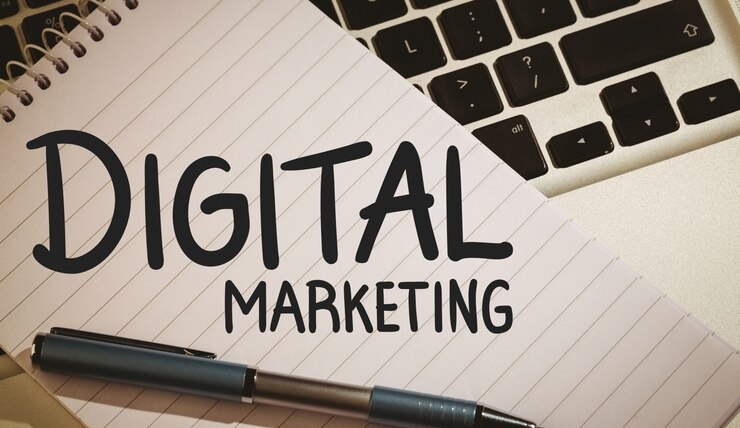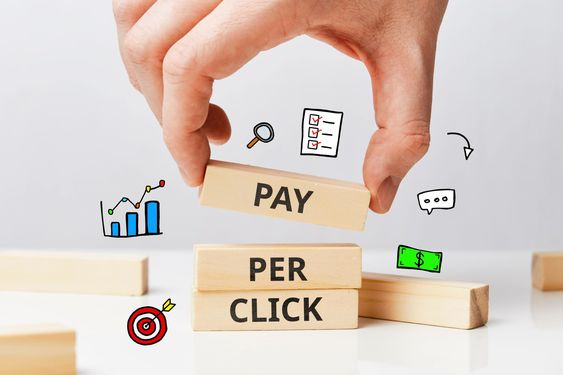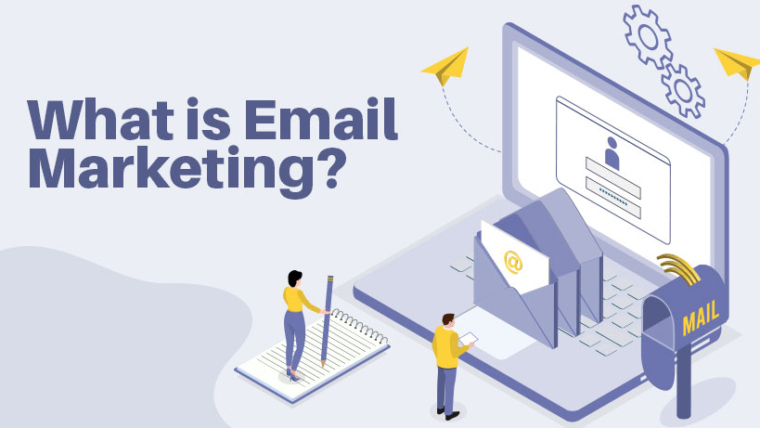Best 17 Resources for Digital Marketing Learning The latest online buzzword is “digital marketing.” Either they want to build their business with digital marketing, or they want to become experts…


Best 17 Resources for Digital Marketing Learning The latest online buzzword is “digital marketing.” Either they want to build their business with digital marketing, or they want to become experts…
The Top 10 SEO Marketing Techniques to Increase Natural Traffic It takes more than just guts to launch a business and make sure it succeeds in a cutthroat industry; you…

What is Content Marketing in Digital Marketing? The main goal of digital marketing is to establish online connections with your target audiences. Content marketing is one of the most effective…

How to use Chat GPT in Digital Marketing? Modern language model for artificial intelligence Human speech can be recognized by Chat GPT. It offers replies that appear to be natural.…

SOCIAL MEDIA MARKETING THREATS An important aspect of digital marketing is marketing research. Without a question, it provides a plethora of options for businesses to thrive on the internet. These…

PPC Marketing’s Top 18 Platforms Let’s look at some of the most well-liked PPC platforms you should take into consideration now that we’ve covered the key points. 1. Google Ads…

Digital Marketing: The Complete Guide Any form of marketing that can be measured throughout the consumer journey by marketing experts and that employs electronic devices to provide promotional messaging. In…
Ecommerce Web Development: What Is It? All the Information You Need Building an e-commerce website is known as e-commerce web development. Checkout systems, payment processing, site security, and other features…

Using email in marketing efforts to promote a business’s products and services and to thank repeat customers. Email marketing allows you to update customers on your email list about new goods, offers, and other services. Educating your audience about the benefits of your brand or maintaining their interest in between transactions can also be a more subtle way to market. It might potentially fall somewhere in the middle. To obtain the most return on investment from your marketing program, Mailchimp can help you design, develop, and optimize your email marketing.
Email marketing is one of the most popular and successful marketing techniques available when you want to expand your brand or sell your products. This article will discuss how email marketing, and more specifically the usage of promotional emails, can aid in business growth. We’ll also offer some advice on how to launch a fruitful email marketing campaign.
A powerful marketing channel is email marketing, a direct marketing and digital marketing strategy that uses email to promote your company’s products and services. By incorporating it into your marketing automation initiatives, it can help spread awareness of your most recent products or offers to your customers. With lead generation, brand recognition, relationship building, and consumer engagement through various marketing email formats, it may also be a key component of your marketing plan.
In 1971, Ray Tomlinson, a computer engineer, sent the first email. He transmitted a message that was little more than a series of numbers and letters, but it signaled the start of a new era in communication. Furthermore, Tomlinson was the one who made using the “@” sign in email addresses more common.
The first commercial email was sent in 1978 by Gary Thuerk, a marketing manager at Digital Equipment Corp., as a way of informing customers about a new product.
The internet was widely accessible on a commercial level by the 1990s. Marketers understood that email may be a beneficial tool for advertising as interpersonal communication started to change dramatically. Regulation modifications were also necessitated by the emergence of marketing emails; the U.K.’s Data Protection Act, for instance, was changed to mandate a “opt out” option for all marketing emails.
Email has become a fairly common marketing technique for businesses due to the fact that it stays in the inbox until it is read, discarded, or archived.
Email marketing can help you establish a connection with your audience and increase traffic to your blog, social media accounts, and other websites you want people to visit. To ensure that consumers are only receiving the messages they wish to view, you may even segment your emails and target users based on demographics.
By employing email marketing software that can also be configured to simply send out emails, you can also use email marketing to do A/B tests on a subject line or call to action to determine the best performing message. To learn more about the possibilities for email marketing.
There are certain negatives to email marketing, despite the fact that it appears like the ideal approach to connect with clients, find new prospects, and strengthen crucial business ties. In fact, EZ Texting is becoming a popular choice for organizations looking for another means of communication.
Our inboxes appear to be overflowing with useless material. “Lose 25 pounds in two weeks,” or “Click here for a big discount.” We all receive these and almost immediately select delete. Because they get in our garbage or spam folders, many of these emails are also never even seen by us. These letters are frequently just a waste of time for the business sending them, unless you are deliberately avoiding spam filters.
Your email might take a long time to load or even not load at all if it is too large. A potential consumer has just lost interest, costing you business, in the time it takes for the download to complete.
Email marketing is a popular form of advertising despite its shortcomings, so clients’ inboxes are likely to be overrun with emails in addition to yours.
This means that in order to differentiate yourself from the competition, you might need to spend money on talented copywriters or run additional promotions to draw in customers.
On the basis of that one instance or offer, a client frequently sees an advertisement and joins up for emails. They might utilize it or not. Regardless, they are now included in the client database, but it doesn’t guarantee that they will continue to open your emails and visit your website. You must constantly look for new ways to engage your audience if you don’t want to see high unopened rates or a large number of unsubscribes.
Today, a variety of devices, including phones, tablets, and PCs, allow you to access your email. This means that your clients might view a less than optimal version of your email unless you’re designing an email for each platform.
The operating system preference of the receiver is unknown to email marketers. An email that was once visually stunning frequently has odd breaks, missing graphics, and logos. These irritate the recipient and get deleted right away, especially if the recipient thinks it’s spam or a hoax. These emails are typically difficult to read and of very little value.
Even though many email services advertise that they are free, several nonetheless impose additional fees for actions like adding photos or writing messages longer than a predetermined length. Make sure you are completely aware of the rules for free emails or you risk incurring additional fees. When you hire someone to create an email template, assist with creating a database of pertinent contacts, and spread the email, the budget may start to feel the strain.
There are many different types of email marketing. Each does a specific task and engages your audience in a distinct way. We’ll examine a few of the various varieties so you can design the most effective email marketing plan for your business.
This kind of email welcomes customers and invites them to find out more about your service. They frequently provide a trial or another perk. It serves to acquaint a prospective client with the company.
Email newsletters are quite popular, and they frequently feature new goods and services. They could also consist of articles, blogs, and client testimonials. Normally, there will be a call to action to encourage the reader to take action, such as reading a recent blog post or investigating a recent product.
Through a series of emails, this type of email targets a certain audience with the intention of eventually converting them. Lead nurturing emails typically target a group that is interested in a particular good or service and then increase their interest through subsequent emails that provide more information or pertinent incentives. To move users from the consideration stage to the purchasing stage is the objective.
You might receive a confirmation email if you recently signed up for emails or newsletters or made your first online transaction. This guarantees that the prospect has gotten the information and is on the list to receive more information. Additionally, they can include additional tasks for users to complete and serve as a manner of informing users that their purchase or sign-up was completed.
Dedicated email is what you send when you just want to communicate with a specific segment of your email list. Recent purchases, inactive clients, new members, and other certain types of criteria might be used to compile its list.
These emails frequently provide information about upcoming occasions, the debut of new goods, and seminars. When there is something exceptional happening, most businesses utilize these kinds of emails to attract attention and raise awareness of the event.
These marketing emails frequently target a broad readership, are generic, and are of a relatively common sort. They may tease new goods and services and are typically intended to keep people informed.
One of the best tools for a business is consumer feedback. By sending out these emails, you are showing your customers that you value their feedback and that you are working to develop experiences, products, or other offerings that they will enjoy. Businesses can also use the suggestions from these surveys to improve their offers, resulting in, hopefully, a better final result.
Many businesses use the holiday season and other special occasions to remind their clients and potential clients about impending deals and promotions. They frequently coincide with occasions like Mother’s Day, Father’s Day, Valentine’s Day, and Christmas.
When a device enters a predetermined area, a service called geofencing causes an action to be initiated. Businesses are figuring out inventive ways to exploit these virtual limits for things like coupons, notifications, engagement features, and security alerts.

In a location-based service called geofencing, a mobile device or RFID tag that enters or exits a virtual boundary created around a specific geographic place, or “geofence,” will cause an app or other software to employ GPS, RFID, Wi-Fi, or cellular data to carry out a previously pre-programmed action.
A geofence’s configuration can cause push notifications on mobile devices, text messages or alerts, targeted social media adverts, tracking of vehicle fleets, the disabling of particular technologies, or the delivery of location-based marketing data.
Management can view alerts when someone enters or exits a certain region thanks to geofences that are put up to monitor activities in secure areas. Businesses can utilize geofencing to track company property, automate time cards, and maintain tabs on field workers.
An administrator or developer must first create a virtual boundary around a given place in GPS or RFID-enabled software before using geofencing. When creating a smartphone app, this can be as easy as drawing a circle 100 feet in diameter around a location on Google Maps. When an approved device enters or quits the area as set by the administrator or developer, this virtual geofence will then initiate a reaction.
Since users must consent to location services in order for a geofence to function, it is most frequently defined within the code of a mobile application. There may be an app you can download that provides information about the concert if you visit the venue. Another option is for a shop to create a geofence around its stores to send mobile alerts to clients who have downloaded the business’s app. In these situations, the app is programmed with a geofence that is controlled by the merchant, and users can choose whether or not to grant the app access to their location.
By utilizing the geofencing functionality in their mobile apps, users can also establish their own geofences. These apps, such as iOS Reminders, let you choose an address or location to start a specific alert or push message. When an app is written to initiate an action based on another action, this is referred to as a “if this, then that” command. As an illustration, “If I’m five feet from my front door, turn on my lights.” Alternately, you may instruct a reminder app to notify you once you arrive at a particular spot.
You’ll hear about geofencing in drone conversations. It’s not just used for smartphone apps; it’s also used to manage and track trucks in the shipping sector, animals in the agricultural industry, and people in the drone industry. Geofencing, which is typically set up around airports, outdoor venues, and even the White House, is supported by almost every drone. These drone-resistant geofences can be set up by the FAA upon request; some of these barriers can stop a drone in mid-flight, while others will send the user a warning message. In order for law enforcement to maintain track of unmanned drones, some drone geofences will request a user’s authorization, a process that links the user’s identity to their drone.
With the popularity of mobile devices growing, geofencing has become a common practice for many companies. Once a region is identified, there are almost unlimited possibilities for what businesses may do; this is especially common in marketing and social media.
When you approach the boundary, you’ll receive a push notification encouraging you to visit the rival place. Some retail and hotel firms may put up geofences around their competitors. Another option is to have a coupon pushed to your device when you enter a store. If you download a grocery app, chances are good that it will detect when you drive by and send you an alert in an effort to persuade you to stop in.
Social networking:
One of the most well-known applications for geofencing is seen in well-known social networking apps, most notably Snapchat. Location-based filters, stickers, and other shared material are made possible through geofencing. It’s all possible because of these virtual boundaries, whether you’re using a sponsored filter at a concert, a specially created filter for a friend’s birthday, or uploading to publicly accessible location-based stories.
Marketing:
In addition to social networking, geofencing is a well-liked method for companies to give in-store promotions. This method alerts you as soon as you approach the store. Businesses can use geofencing to target ads to a particular audience and determine which marketing techniques are most effective depending on user location information.
Audience engagement:
At scheduled events like concerts, festivals, fairs, and more, geofencing is employed to captivate large crowds of people. For instance, a concert venue might utilize a geofence to collect social media posts from the public or to disseminate details about the location or the event.
Smart application:
It’s now simpler than ever to set up your fridge to alert you when you’re out of milk the next time you pass by the grocery store as more of our equipment become “smart,” with Bluetooth capabilities. Alternately, you might use a geofence to ensure that the thermostat is already set to the ideal temperature when you return home from work.
Human resources:
Some businesses use geofencing to keep an eye on employees, particularly those who spend time off-site performing field work. Additionally, it’s simple to automate time cards by clocking workers in and out as they enter and exit the building.
Telematics:
Telematics can also benefit from geofencing, which enables businesses to create virtual boundaries around buildings, workspaces, and secure areas. When engaged by a person or a vehicle, they can convey alerts or cautions to the operator.
Security:
Depending on how it’s used, geofencing could sometimes appear intrusive and like an overreach. To increase the security of your mobile device, geofencing can also be used. By utilizing a geofence, you can, for instance, configure your phone to only unlock while you are at home or to send you notifications when someone enters or exits the building.
Geofencing comes with several warnings, particularly when it comes to marketing privacy. One of the first states to pass a consumer protection statute that forbade the use of location-based advertising was Massachusetts just last year.
The Attorney General stopped an anti-abortion ad campaign by Copley Advertising that was intended to target women in the waiting area or close by. Copley Advertising had been contracted by a Christian organization to build up a geofence around women’s health facilities.
Geofencing doesn’t appear to be losing its appeal anytime soon, despite concerns about security. The geofencing market is anticipated to increase by over 27 percent by 2022, as stated in a Markets and Markets press release, due to “technological advancements in use of spatial data and increasing applications in numerous industry verticals.”